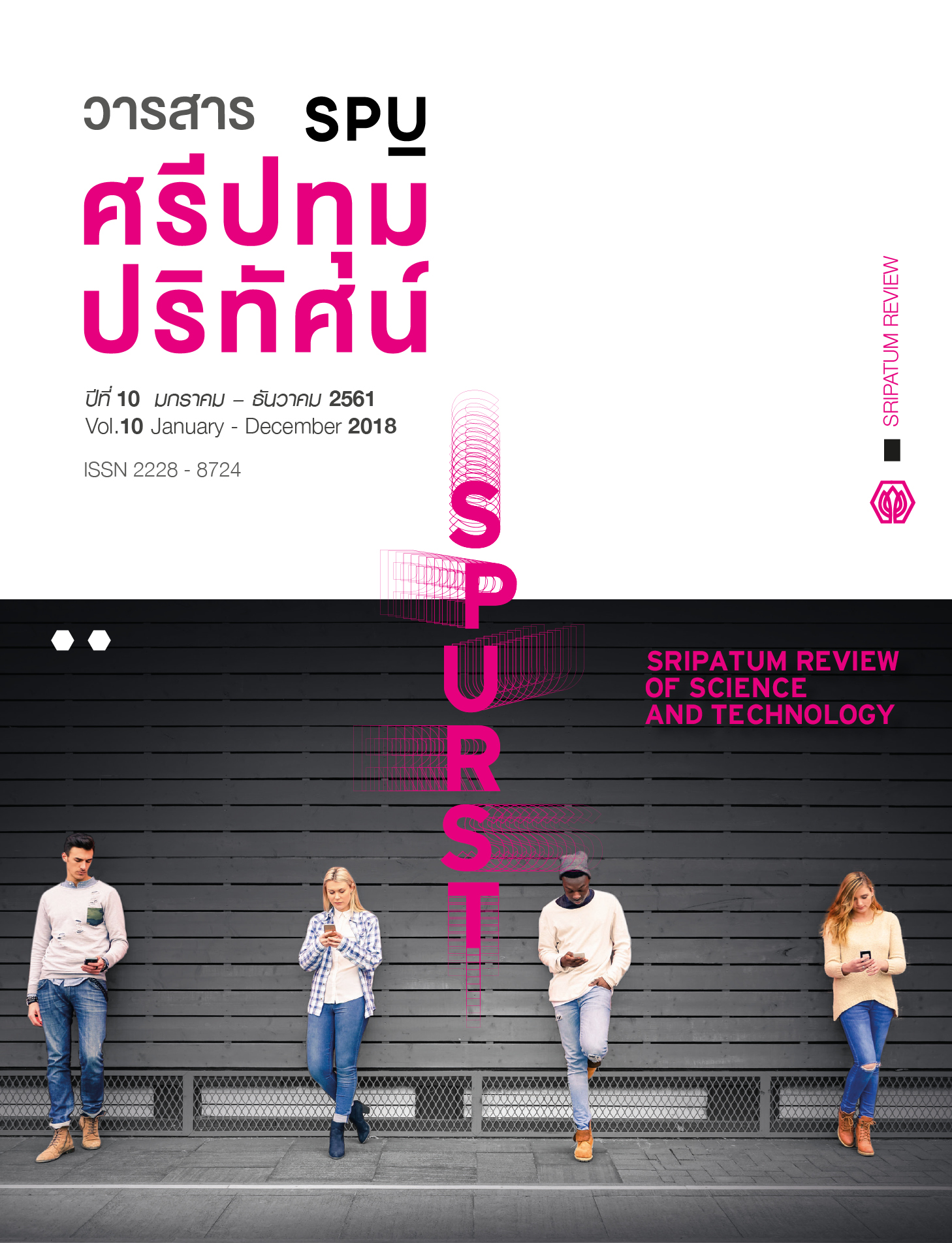Online Marketing and Customer Service by Chatbot Case Study: Chatfuel in Customer Interactive on Messenger
Main Article Content
Abstract
This research aims to (1) design a conversation structure by defining questions and answers from actual data of online sellers; (2) assess the ability to use Chatfuel for customer interaction via messenger; and (3) find the relationship between the user factors affecting overall evaluation results. The research sample consisted of 30 users purposively selected from Facebook personal account in Thailand with 100% confidence interval. The actual data was collected from 5 online sellers in shopping dialogue. The data was taken to be classified into issue questions and set a corresponding answers in the Chatboard conversation flow, starting with greeting words and ending when customers show interests on products or order the products and the seller gives the customer the contact channel leading to closing the sale in the next step. Each user was allowed to buy the products via messenger without knowing that he/she was chatting with the Chatboard. The overall evaluation result was at a good level ( = 3.68). Strength components were the learnability and effectiveness (= 4.20 and 3.97), weakness component was the conversation coverage at normal level ( = 3.07). When users were divided into 3 groups each of which containing 10 members, namely, Thai language expert group, online seller group, and general user group, it was found that the mean of each of the groups was at the good level ( = 3.69, 3.80 and 3.56). However, when evaluation results of all components from each group were compared using one-way analysis of variance, it was found that the online seller group and the general user group differed significantly at the .004 level in their efficiency evaluation results from the behaviors of the general user group that tended to use questions containing several sentences instead of one complete sentence. When all factors of the users were taken to create a multiple regression linear model, it was found that gender, educational level, user status, monthly income, computer and smartphone experience, online shopping experience, internet usage hour per day, frequency of online shopping per month, and online shopping channels could be combined to predict the overall evaluation result by 99.4 percent, with multiple coefficients value of .997, which was significant at the .000 level.
Article Details
References
Davydova, O. (2017). 25 Chatbot Platforms: A Comparative Table [Online]. Retrieved July 9, 2018, from: https://chatbotsjournal.com/25-chatbot-platforms-a-comparative-table-aeefc932eaff.
Edison Research. (2012). Most Who Use Social Media for Customer Service Expect A Very Quick Response. New Jersey: The Social Habit.
Electronic Transactions Development Agency. (2017). Thailand Internet User Profile 2017. Bangkok: Ministry of Digital Economy and Society. (in Thai)
Electronic Transactions Development Agency. (2017). Value of e-Commerce Survey in Thailand 2017. Bangkok: Ministry of Digital Economy and Society. (in Thai)
Kuligowska, K. and Lasek, M. (2011). Virtual Assistants Support Customer Relations and Business Process. The proceeding of 1oth International Conference on Information Management, at Gdansk University of Technology, Sopot, 155-164.
Mindbowser Info Solution. (2017). Chatbot Survey. Maharashtra: Chatbot Journal.
Nielsen, J. (2000). Why You Only Need to Test with 5 Users [Online]. Retrieved April 5, 2018, from: www.nngroup.com/articles/why-you-only-need-to-test-with-5-users
PricewaterhouseCoopers (PwC). 2016. Online shoppers who said they are shopping directly via a social media channel. London: Total Retail Survey.
Pramookkul, C. (2005). Intelligent Sell Representative e-Commerce. Ubon Ratchathani : Ubon Ratchathani University. (in Thai)
Rajatanavin, R. (2015). The Risk of False Conception of Consumer Products Circulated in Social Media. Sripatum Review of Humanities and Social Sciences, 15, 89-99. (in Thai)
Thailandzocialaward. (2018). Social Media Movement. Bangkok: Thoth Zocial Co., Ltd.
Chatfuel. Chatfuel Launches Template Marketplace for Building Better Bots Faster [Online]. Retrieved March 15, 2018, from: ttps://blog.chatfuel.com/tag/update.


